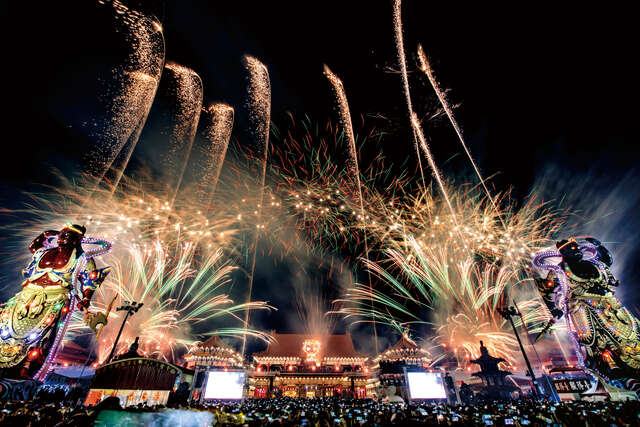Tucheng Zengtong Luermen Mazu Temple Introduction
Tainan is the birthplace of Taiwan. The Zheng Tong Luermen Mazu Temple originated in the sixteenth century and was established to worship Mazu of Luermen. It is the only temple in Taiwan that enshrines the Mazu statue with over 800 years of history and is the largest Mazu temple by area. The temple is divided into five main halls: Wang Hall, Mazu Hall, Buddha Hall, Great Deity Hall, and Tiangong Hall, modeled after the palace style of the North. Every year, a series of spring carnival activities are held starting from the first day of the Lunar New Year, along with the Lantern Festival high-altitude fireworks show, bombarding firecrackers, and the Spring Ox parade, attracting a constant flow of visitors! The activities of Luermen Mazu do not stop there; on the 23rd day of the third lunar month, a charity event is held with rice donations and free tasting of milkfish dishes. A triennial ritual called the Tucheng Incense Offering is also held in the years of the Ox, Dragon, Goat, and Dog. Additionally, the temple features a Fude money area, a cultural relic museum, a cultural creative center, and a pilgrim building, which together cater to culture, tourism, gourmet food, leisure, and charity, making the Zheng Tong Luermen Mazu Temple a top tourist attraction in Tainan. A brief history of the Luermen Mazu Temple: In 1661 (the 15th year of the Ming Yongli era), Luermen Mazu manifested to aid Zheng Chenggong's forces by raising the tide for their landing in Taiwan against the Dutch. In 1662, after the Dutch surrendered, Zheng rebuilt the temple to thank Mazu and also enshrined the civil and military generals aboard the fleet, along with the National Saint Mazu. Luermen Isle gradually became a gateway to Taiwan, emerging as a military and commercial stronghold, and Mazu's status became increasingly revered. In 1831 (the 11th year of the Daoguang era), the temple was destroyed by flooding from the Zengwen River, and the statutes of Luermen Mazu were temporarily enshrined at the Haian Temple in Sanjiao. In 1918 (the 7th year of the Republic), the second temple was completed, and over seventy statues, including Luermen Mazu, were returned from Haian Temple. In 1913 (the second year of the Taisho era), a boat dedicated to the Five Rulers from Quanzhou passed through the treacherous Taiwan Strait and docked along the Tucheng coast, and upon Mazu's divine indication, the local people built a palace to enshrine them. In 1916 (the fifth year of the Taisho era), the statues that had been temporarily enshrined at the Haian Temple due to flooding were welcomed back. In 1918 (the seventh year of the Taisho era), the second temple was completed and named Bao’an Palace, and it wasn’t until 1960 that it was renamed "Luermen Mazu Temple." In 1981, after multiple repairs and reconstructions under Mazu's divine protection, the third temple was finally completed.

































